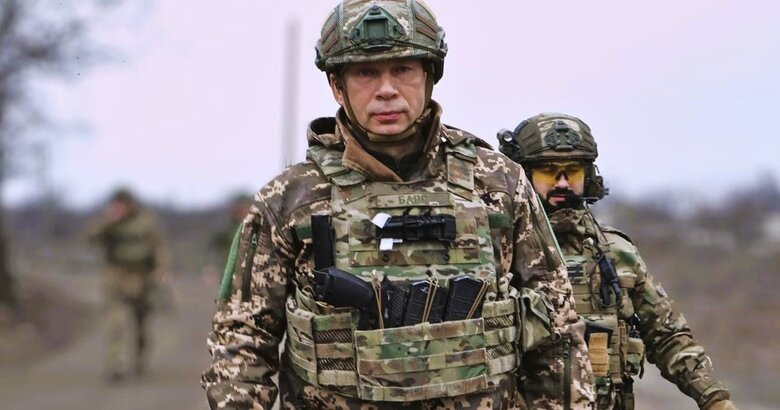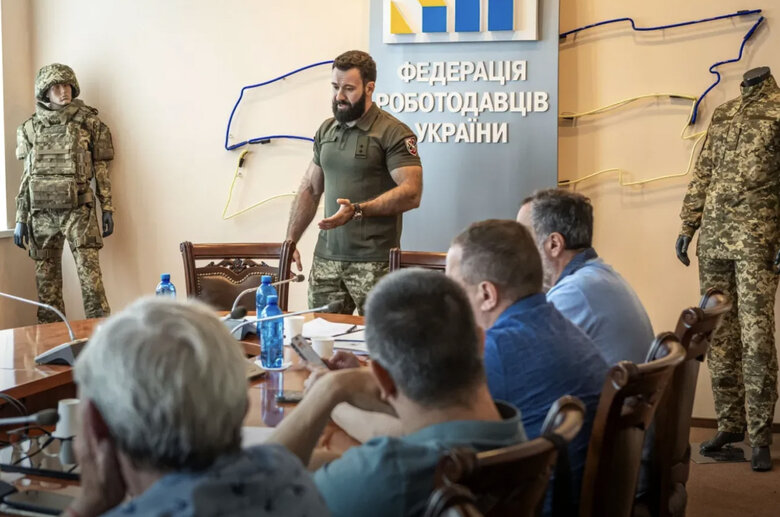MultiCam VS pixel. Why did fabric change pave way for corruption scandal?
Over the past two months, the Ministry of Defense has been facing its second major textile scandal, on which both the timely delivery of military clothing and the multimillion- or even billion-dollar earnings of certain suppliers hinge.
On July 29, the website of the Ministry of Defense’s Central Directorate for Material Support Development published an announcement about the introduction of a new camouflage pattern called "MM-25." This means that alongside the "pixel" camouflage pattern, the "multiCam" pattern will also be used.
At first, this story went unnoticed, and it only gained traction in the media this past weekend, including commentary alleging a corruption scheme.
In fact, there is nothing criminal about approving MultiCam as a new camouflage pattern alongside Pixel. But there are serious questions about how it was subsequently used in tenders by the State Operator for Non-Lethal Acquisition (DOT), which is what sparked outrage across much of the market.
So let’s examine what happened, who devised it, and who has come out ahead at this point.
But first, a brief history of the pattern. Until 2014, the Ukrainian army primarily used the "Dubok" camouflage pattern (three-color). Only during Poroshenko’s presidency was the Pixel pattern developed, the approved MM-14 fabric pattern composed of pixelated squares in various shades of dark olive green, gray-green, dark gray, and light green on a typically light beige or sandy background.
Pixel is essentially a uniquely Ukrainian pattern.
At the same time, Ukrainian service members have been buying foreign-made jackets in MultiCam because they are of higher quality. But troops cannot wear mixed uniforms, so they have long been asking to introduce MultiCam.
Therefore, using the pattern developed in 2002 by the U.S. company Crye Precision, a new Ukrainian MM-25 fabric pattern (the Ukrainian "MultiCam") was created.
How did this happen and when?
- On May 30, 2025, Commander-in-Chief of the Armed Forces of Ukraine, General Oleksandr Syrskyi, sent a letter to Defense Minister Rustem Umerov with the results of experimental tests showing that the MM-25 demonstrated better camouflage properties than the current "Pixel" MM-14. He also proposed amending the technical specifications for fabrics and starting procurement.
- That same day, the minister issued a resolution to proceed with development (assigning the task to Deputy Minister Mykola Shevtsov).
- By June 3, 2025, the Logistics Forces Command submitted samples of MM-25 fabric for approval.
- On June 11, 2025, the Central Directorate for Material Support Development approved the technical specifications for "cotton and blended" fabrics featuring the new MM-25 camouflage pattern.
- On July 15, 2025, the Ministry of Defense’s collegial body supported the proposal to inform all market participants about the new technical specification to ensure transparency and equal conditions.
- On July 28, 2025, information about MM-25 was conveyed to manufacturers during a meeting with the Employers' Federation.
- On July 29, 2025, the Central Directorate’s website published an announcement about the implementation of MM-25.
So far, everything seems fine, except that the unusually rapid pace at which the issue has been processed raises serious concerns.
Note how the matter is reflected in the minutes of the collegial body’s meeting: "The album of fabric color samples in the ‘MM-25’ pattern for combat uniforms was approved. The color scheme is currently being finalized, after which information about the approved sample will be published for potential manufacturers to review."
At the same time, Maksym Kaiola, head of the Ministry of Defense’s Central Directorate for Material Support Development, proposed ensuring equal conditions and competitiveness by informing all market participants about the development of the new camouflage pattern. He followed through on this proposal on July 28 during a meeting with the Employers’ Federation.
But four days earlier, something happened that calls into question the integrity of the entire MultiCam rollout.
As early as July 24, the state enterprise "State Operator for Non-Lethal Acquisition" announced tenders for five line items using the new fabric samples.
It turned out that the Logistics Forces Command had very quickly submitted a requirement for 20,000 garments made from the new fabric, a combat shirt, a special summer suit, a summer field boonie hat, a special winter suit, and trousers for the summer field uniform.
In each tender, the requirement was divided into three lots: 1,000, 4,000, and 15,000. As a result, the tender for the combat shirt went ahead only for the 4,000-unit lot, which was won by the company Oltex.
The tender for the special summer suit did not take place at all.
All three lots for sewing the boonie hat were won by Green Moda at a price of 259.02, but the company was disqualified.
The special winter suit in MultiCam was tendered only under Lot 3 for 15,000 units, and it was awarded to MIK.
The contract to sew 4,000 pairs of trousers for the summer field uniform in MultiCam was again won by Oltex.
And now a few more nuances that raise questions.
The tenders were announced only on July 24 and were already held on August 4, which is very fast.
According to Annex 3 to the notice, the delivery deadline is set for 30.09.2025.
Signing the contract typically takes up to 10 calendar days. In other words, the actual delivery window would be 47 days. That is very short, especially for winter items.
And given that the goods have to be submitted for inspection three times, it becomes impossible to meet the deadline unless you already have raw materials or finished products in stock.
Who can produce the fabric in Ukraine? It seems that only the Cherkasy Silk Mill can handle such volumes. As industry sources told Censor.NET, setting up production of a seven-color fabric takes about eight months.
-
Selection and procurement of dyes (1–3 months)
-
Purchase of necessary raw materials—yarn or greige fabric (3–4 months)
-
Production of printing forms (rollers for applying dye) (1–2 months)
-
Setting up fabric production (2–4 months)
And after the fabric arrives, it will still take another one to three months for tailoring, depending on the item.
If the fabric is not sourced in Ukraine, it can be procured abroad. This is now even easier because the Pixel pattern was dyed exclusively for us, whereas MultiCam is available in China and Turkey.
Off-topic, but let’s recall the infamous scandal around Reznikov’s jackets. When journalists pointed out that the jackets could have been bought cheaper and that in 2023 they were found at a lower price, one official explained it like this: "They could be giving away our Pixel pattern for free a year later because no one else but us would buy it. Everyone wears MultiCam."
Accordingly, introducing MultiCam opens wide doors for imports, if not for the entire garment, then at least for the raw materials.
"Ukrainian soldiers prefer MultiCam not because it blends better with the landscape, but because American fabric is higher quality, softer to the touch, and breathable. But our jackets, priced at 2,000, won’t match that quality," a source told the publication.
Meanwhile, some Ukrainian manufacturers are now convinced that all this was engineered to favor those who had already won the tenders. After all, this is exactly how Ukrainian "market" laws work.
Someone, knowing the military’s preferences, cooks up a scheme, tells the relevant military official, and that got the ball rolling…
Against this backdrop, it’s quite interesting that MIK can argue with DOT for a long time, yet, in fact, enterprises within this group are currently monopolizing the supply of thermoses, which have been purchased this year.
The company Green Moda, which surfaced very timely last year in tenders for ponchos after deliveries were disrupted by Ukrspetstekstyl.
Therefore, corruption schemes in defense procurement are not just about the tender prices. It’s a much subtler and often invisible game, where several factors suddenly align in favor of a single manufacturer.
By the way, here’s another mini scandal involving fabric. At the same meeting of the collegial body, another detail surfaced, the Cherkasy Silk Mill, lacking the necessary components, suddenly changed the production technology for the fabric used in the jacket’s outer layer. What’s interesting is that this was discovered by accident. The company Versakhem, which won several tenders, realized they were sold the wrong fabric and came to the Ministry of Defense asking whether such a product would be accepted. The fabric was tested in a laboratory and turned out to be better in some parameters. However, it wasn’t tested in wear trials, so this could have left them without jackets. Yet the mill somehow failed to notify in time.
Ukrainian business as it is…
What could stop this scandal? The full-scale introduction of MultiCam is at least a year away. Right now, the Logistics Forces Command assured me that only 2% of the required amount has been purchased, for special units that were already wearing it before.
Tetiana Nikolaienko, Censor. NET


